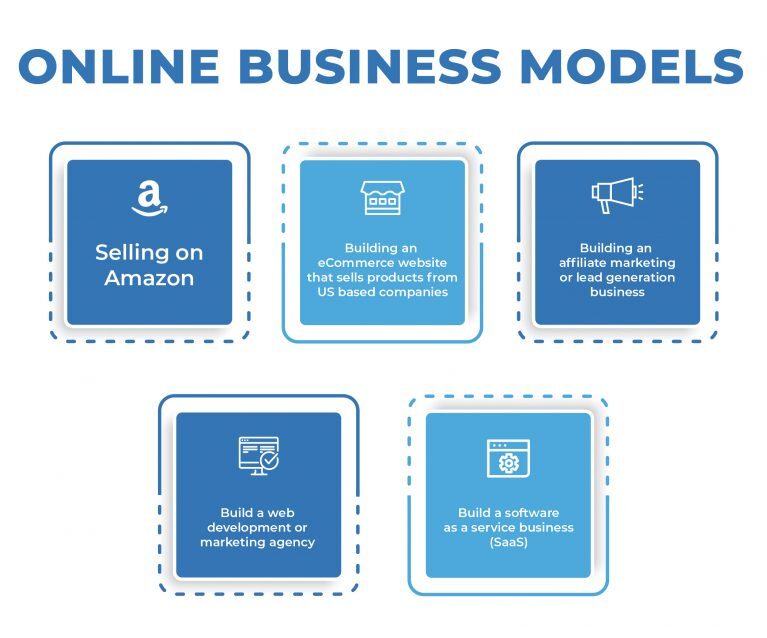Are you interested in joining the ever-expanding world of e-commerce by selling products on Amazon? If so, you’re in the right place. Amazon offers various business models to choose from, and selecting the right one is crucial for your success. In this article, we will explore different Amazon business models and guide you on how to make the best choice.
Table of contents
Understanding Amazon Business Models
Amazon, one of the world’s largest online marketplaces, provides entrepreneurs with numerous business models to start and grow their online businesses. Each model has its unique features, benefits, and requirements, catering to a wide range of sellers.

The Importance of Choosing the Right Business Model
Selecting the right business model is the first and most critical step in your Amazon journey. It directly affects your business’s structure, operations, and profitability. An informed choice can set you on the path to success, while a poor choice might lead to unnecessary challenges and setbacks.
Different Amazon Business Models
| Aspect | Amazon FBA | Amazon FBM | Amazon Dropshipping |
| Fulfillment Process | Amazon handles storage, packaging, and shipping of products. | Sellers handle storage, packaging, and shipping themselves. | Suppliers handle product storage and shipping directly to customers. |
| Control | Sellers have less control over the fulfillment process but benefit from Amazon’s infrastructure. | Sellers have more control but are responsible for logistics and fulfillment. | Sellers have limited control over inventory and fulfillment as it relies on suppliers. |
| Shipping Speed | Generally, Amazon FBA can provide faster and more reliable shipping for Prime-eligible products. | Shipping speed depends on the seller’s chosen logistics and fulfillment capabilities. | Shipping speed varies based on the supplier and their location. |
| Storage Fees | Amazon charges storage fees for products stored in their fulfillment centers. | No storage fees are incurred as products are stored by the seller. | No storage fees, but sellers may have to pay fees or commissions to suppliers. |
| Prime Eligibility | FBA products are often Prime-eligible, making them more attractive to Prime members. | FBM products may or may not be Prime-eligible, depending on the seller’s shipping capabilities. | Dropshipping products may not always be Prime-eligible, as it depends on the supplier. |
| Logistics Complexity | Relatively low logistics management required as Amazon handles most aspects. | Sellers need to manage inventory, packaging, and shipping logistics. | Sellers rely on supplier logistics, reducing their management but increasing supplier reliance. |
| Returns Handling | Amazon handles returns for FBA products, making it convenient for sellers. | Sellers are responsible for handling returns, which can be more complex. | Returns may be managed by suppliers or involve coordination between the seller and supplier. |
| Initial Investment | May require an initial investment in inventory and storage fees. | Lower initial investment as sellers use their own storage and fulfillment resources. | Minimal upfront investment as sellers don’t need to hold inventory. |

How to Choose the Right Model?
Choosing the right business model is a crucial decision. Here’s a step-by-step guide to help you make an informed choice:
Assessing Your Resources and Skills
Evaluate your financial resources, time, and expertise. Some models may require more capital or specific skills than others.
Researching Market Trends
Stay updated on market trends and consumer demands. Identifying profitable niches is key to success.
Competitive Analysis
Analyze your competitors in the chosen niche. Understand their strategies and identify gaps you can fill.
Setting Realistic Goals
Set clear, achievable goals for your Amazon business. Your business model should align with your objectives.
Legal and Tax Considerations
Understand the legal and tax implications of your chosen business model. Consult professionals if necessary.
Making the Decision: Step-by-Step
Consider all the factors discussed above and make a well-informed decision based on your unique circumstances.
Building a Successful Amazon Business
Once you’ve chosen the right business model, focus on building a successful Amazon business. Provide excellent customer service, optimize your product listings, and continuously refine your strategy.
Conclusion
Amazon offers a diverse range of business models to cater to various sellers. By carefully assessing your resources and market conditions, conducting thorough research, and making informed decisions, you can choose the right Amazon business model that suits your needs. Success on Amazon is within your reach if you take the time to make the right choice.
Readmore : How to Create a Winning Amazon Product Listing?
FAQ’s Related Amazon Business Model
Yes, it is possible to change your business model, but it may involve some logistical adjustments and considerations.
Profitability depends on various factors, including product selection, pricing, and marketing. It’s essential to conduct thorough research and analysis.
Some models require a professional seller account, while others can be used with an individual seller account. Check Amazon’s requirements for each model.
Selling internationally is possible with most business models, but you should be aware of international shipping and tax implications.




